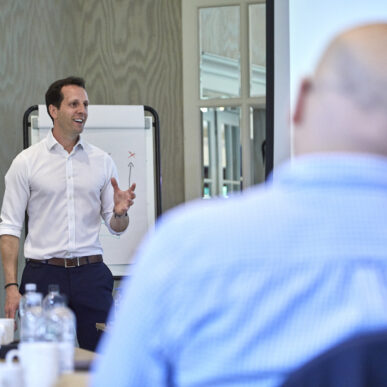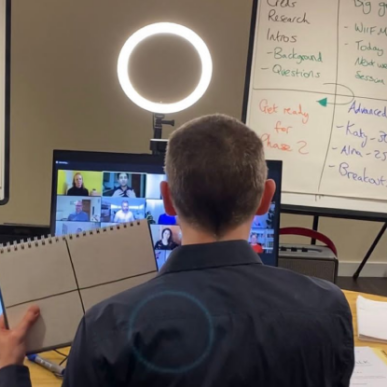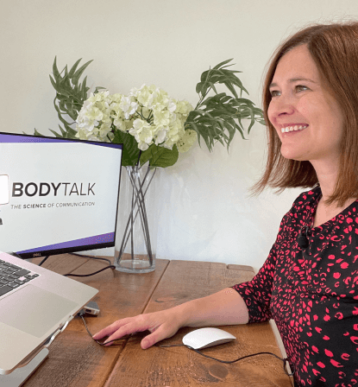How to Develop Your Unique Presentation Voice
Have you ever been in a meeting where someone’s voice just seemed to blend into the background? I remember attending a conference where the speaker had brilliant content, but spoke in such a monotone voice that half the audience was checking their phones within minutes.
Contrast that with another presentation I attended at the same conference. This speaker didn’t have the flashiest slides, but his voice was vibrant and engaging. He shared a story about his first job, filled with ups and downs, using his natural tone and rhythm. The room was captivated, hanging on to his every word. His authenticity and energy made his message unforgettable.
The tone and vocal quality with which we deliver information significantly impacts how much our audience remembers and how likely they are to act on our ideas. If your tone or style turns off your audience, you might as well be talking to an empty room.
So, what’s the perfect presentation voice for hooking your audience’s attention? The answer is simple; yours. By stripping away habits and returning to your natural speaking style, your voice will engage the room. Your way of speaking should be a vessel for your personality and the message you’re delivering.
Here are a few things to try—and a few to avoid—to achieve this:
Avoid Being Too Formal
People often think that delivering a presentation with statistics and data means they have to be formal. This is a natural reaction when speaking to a large group of people with serious expressions. You might feel you need to mimic the formal style you’ve seen others use.
However, this leads to a lack of variety, expression, and emotion. We tend to separate our professional and personal lives, meaning we end up being impersonal at work. Don’t lose empathy and excitement in your presentation just because it’s about business; business is done with people, so it must connect with emotions as well.
Avoid Being Small
Some people excel in one-on-one conversations and Teams calls, so assume they can use the same voice in a large conference room. Unfortunately, that doesn’t always translate well to a large space.
Think about the differences between screen and stage acting. Screen acting relies on details and subtle changes in expression or tone. But if those same actions were used in a theatre production, most people wouldn’t connect with the story on stage. You have to fill that larger space with your voice and body. Just relying on the tools you use in day-to-day conversation won’t cut it.
Amplify Your Personality
Once you decide to stick with who you are, you simply have to project your personality in a way that fills a larger room. Good public speaking is a physical act, so you must use your body effectively. Here are a few steps to take before every presentation:
- Remove tension: Release your shoulders, shake out your body and loosen your jaw. A tight jaw makes for a tight voice.
- Warm up gently: Just as you would warm up before doing sport or exercise, warm up the muscles you use to speak. Quietly hum up and down your vocal range and use tongue twisters to loosen your facial muscles and articulate.
- Engage your projection muscles: Imagine there’s a candle a metre in front of you and you have to blow it out. Put your hands on your stomach and make a ‘tsssss’ sound to blow the candle out using as much air as you can to create a loud sound. You’ll feel your projection muscles engage, bringing your stomach in slightly as the air goes out. This is where your voice should be supported, not from your chest or your neck.
- Use gestures: Your body is the engine for your voice and adopting good posture and using congurent gestures will help give extra energy when you speak.
Make Sure You Enunciate
It doesn’t matter if you have a strong accent or are prone to speaking quickly as long as you enunciate. Good enunciation in front of a large room requires your mouth muscles to work harder than they would in a one-on-one conversation. Even if you have a microphone, make sure your enunciation is clear and crisp by being aware of each letter in the word and giving it it’s full value. If you’re speaking to an audience who doesn’t share your language, leave short pauses after key messages to allow them to process before you move on.
Avoid Using Armour
There are many reasons we might use armour. The most common is perhaps fear of judgment and lack of confidence. Let’s be honest, presenting as yourself can feel incredibly vulnerable. You’re putting your true thoughts and personality out there for everyone to see, and that’s scary. So, we create a character—a buffer to protect ourselves from criticism or rejection. It feels like a safety net, but it also distances us from our audience.
A lot of us also don’t feel confident that our natural speaking style is engaging or professional enough. We think we need to put on a different persona to be accepted and appreciated. But the truth is, using a character creates a psychological distance between you and your audience. This distance makes it harder for them to relate to you and your message. A character can come across as insincere, which reduces audience engagement. While a presentation delivered with armor might impress initially, it tends to have a shorter-lasting impact. Authentic presentations resonate more deeply and are remembered longer. Plus, maintaining a character is exhausting. Presenting as yourself is more sustainable and allows you to deliver your best consistently.
Here are some other reasons we might put on our armour when delivering a presentation.
- Perceived Expectations – We often feel pressured to conform to certain expectations, especially in professional settings. This pressure makes us adopt a formal, distant persona that we think our audience wants. However, audiences usually prefer a genuine, relatable speaker over a polished but impersonal one.
- Negative Past Experiences – If you’ve ever been criticised or undervalued for being yourself, it’s natural to want to hide behind a character to avoid getting hurt again. But this emotional armor prevents genuine connections and limits the impact of your message.
- Imitation of Role Models – Many of us try to mimic role models who seem to have a certain style or character when they speak. We think that adopting their persona will make us successful. In reality, it’s their authenticity that makes them effective, not the character they appear to play.
Focus on How You Want Your Audience to Feel
Finally, always focus on how you want your audience to feel when you’re finished. Once you decide on that end result, channel it into your vocal tone. Imagine you’re telling a story about a recent holiday or speaking to someone who brings out a specific side of your personality. Channel that aspect to inspire the desired emotion in your voice and therefore your audience. This will help you feel less self-conscious because your presentation becomes less about you and more about using your body, voice, and personality to serve your message.
Your unique voice is your most powerful tool. Embrace it, connect with it, and watch your audience respond with engagement and enthusiasm.
To learn more about how we can help you amplify your voice and presentation skills, please contact our team.




















